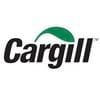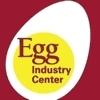Explore all the information on
Poultry egg quality
Egg quality defines those characteristics of an egg that affect consumer acceptability and preference. Components of quality include shell quality and interior egg quality for shell eggs, and interior egg quality for further processed eggs. The quality of the egg once it is laid cannot be improved. Hence, its maintenance is mostly a preventive process. Egg quality is influenced by several factors including rearing, temperature, humidity, handling, storage, and egg age. Shell quality: There are five major classes of shell defects: integrity, texture, shape, color, and cleanliness. Internal egg quality involves functional, aesthetic and microbiological properties of the egg yolk and albumen. The proportions of components for fresh egg are 32% yolk, 58% albumen and 10% shell. Regarding exterior egg quality, the shell of each egg should be smooth, clean and free of cracks. The eggs should be uniform in colour, size and shape.
Fausto Solís (The Wenger Group) speaks on a replacement of calcium carbonate in layer diets, as well as the importance of magnesium levels, during this interview at IPPE in Atlanta, USA....
Comments : 0
Recommendations: 0
Lieske van Eck (Cargill) talks about a tool developed to measure body fat level in laying hens and how it helps in the decision-making process to get better egg persistency and better egg production, in this interview during IPPE 2024 in Atlanta, USA....
Comments : 0
Recommendations: 0
I. INTRODUCTION Feeding the world’s projected burgeoning human population increase of 2.2 billion people by 2050 will place tremendous pressure on food security. The poultry industry is innovative and well positioned to address this problem through increased efficiency and waste reduction. Globally, 32% (by weight) of produced food − equivalent to 1.3 billion tons − is lost or wasted every year. Conversion of food waste into raw materials for production of poultry...
Comments : 0
Recommendations: 0
I. INTRODUCTION With ongoing genetic selection for improved persistency of lay and feed efficiency (FE) in laying hens, the egg industry is pursuing the opportunity to extend layer hen lifespan until they are 100 weeks of age (WOA), with an aim for each hen to produce up to 500 eggs. This presents some challenges for the hen as during this longer laying cycle she will be producing more than 31 kg of egg product (Muir et al., 2022c) and using approximately 1 kg of calcium (Ca) to...
Comments : 0
Recommendations: 0
I. INTRODUCTION Modern broilers grow quickly because they have tremendous genetic potential due to intensive selection for increased growth rate and efficiency (Zuidhof et al., 2014). The parents, broiler breeders, carry this genetic potential and when fed ad libitum, easily become overweight (Heck et al., 2004), compromising reproductive performance (Renema and Robinson, 2004; Chen et al., 2006) and reducing welfare (Mench, 2002). Thus, broiler breeder hens are typically feed...
Comments : 0
Recommendations: 0
I. Introduction A consistent definition of aging was presented by DiLoreto and Murphy (2015). According to these authors, aging is the result of the non-functionality of the animal's cells, tissues and organs, caused by the stochastic degradation of its parts. This definition considers the changes that have occurred in laying hens that affect the rate of lay (Gu et al. 2021a, 2021b). The main changes are related to the digestive, reproductive system, endocrine glands and...
Comments : 0
Recommendations: 1
1-Monoglycerides of short and medium chain fatty acids (monobutyrin, monocaprin and monocaprylin) have shown positive effects on cell metabolism, intestinal integrity and immune system (Calder 2008). However, little is known about their effect on laying hen health, performance and egg quality. Therefore, this study was designed to add further insight into the applied benefits as well as optimal inclusion level of 1-monoglycerides of butyric, capric and caprylic acid on hen performance, their...
Comments : 0
Recommendations: 0
Minerals such as copper, manganese and zinc are essential nutrients for enzyme functionality, immune system responses, tissue and bone quality as well as eggshell formation (Richards et al., 2010). Organic trace minerals are used in animal feeds to provide increased mineral bioavailability. In this experiment we investigated the benefits of hydroxy analogues of chelated trace minerals on pullet quality. Three hundred- and sixty day-old Isa Brown layers were randomly allocated into two groups...
Comments : 0
Recommendations: 0
I. Introduction Ingredients other than in-feed antimicrobial compounds can offer a sustainable approach to improving gastrointestinal (GI) health and animal performance. Efficient egg production and egg quality are of major importance to the poultry industry, but their optimisation is dependent on numerous factors. Nutrition and disease factors are among the most common factors affecting egg production and quality (Roberts, 2004). It follows that a healthy GI tract is required for...
Comments : 0
Recommendations: 0
Jonathan Cade, President of Hy-Line International, talks about the current trends and challenges in poultry production and how the Hy-Line team supports egg production worldwide...
Comments : 0
Recommendations: 0
In cage-free housing, multi-tiered aviary structures are often used (pictured above), where key resources (i.e., feed, water, nests, perches) are available on elevated platforms called tiers, and litter substrate is available on the ground floor for dustbathing and foraging. Hens move vertically and horizontally...
Comments : 0
Recommendations: 0
Ioannis Brouklogiannis (Agricultural University of Athens) This study was conducted to investigate the inclusion level effects of a natural phytogenic blend (PB) on production performance, egg quality, and underlying detoxification (aryl hydrocarbon receptor; AhR), antioxidant (nuclear factor erythroid 2-related factor 2; Nrf2) and inflammatory (nuclear factor-kappa B; NFκB) responses in layers’ duodena and ceca. Depending on PB...
Comments : 0
Recommendations: 0
Ioannis Brouklogiannis (Agricultural University of Athens) presents his research on the benefits of phytogenics to production performance and egg quality in laying hens, during the 11th Symposium on Gut Health in Production of Food Animals in St. Louis, USA....
Comments : 0
Recommendations: 0
About the study Phytase supplementation has become a standard practice for poultry diets to enhance phosphorus (P) utilization and subsequently reduce P excretion. Previous phytase studies on hen performance, eggshell and bone quality have been done over short durations and using hens of varying ages. The knowledge gap is that there are no long-term phytase studies covering the rearing period through the end of production cycle. The objective of this study was to...
Comments : 2
Recommendations: 1
Summary This study was conducted to test the efficacy of phytase in low phosphorus and calcium diets in the late production cycle for maintaining the productivity, eggshell and bone quality of hens fed low phosphorus and calcium. Problem Exogenous phytase supplementation has become a standard practice for poultry diets to liberate available phosphorus and reduce excretion of phosphorus in manure. Many studies showed that phytase supplementation increased egg...
Comments : 10
Recommendations: 4
Hydroxychloride trace minerals (HTM) have covalent bonds and thus are less reactive both in the feed and in the digestive tract compared to inorganic trace minerals, which contain ionic bonds (ITM) such as sulphate forms. Therefore, HTM may have higher bioavailability than ITM. This study aimed to evaluate the effects of replacing sulphate forms of zinc (ZnSO 4 ), manganese (MnSO4) and copper (CuSO 4 ) (ITM) with HTM sources on tibia bone traits and mineral content in...
Comments : 0
Recommendations: 0
1. Introduction The availability of good quality quail eggs to consumers depends on the degree of deteriorative impacts they have suffered before being offered for sale. This degree of deterioration will be determined by the management of the eggs, which mainly includes the environmental conditions to which they are subjected, whereby the degree of internal deterioration of eggs is lower in cool compared to hot environments [1,2]. However, these cool environments will only be fully...
Comments : 0
Recommendations: 0
1. Introduction Listeria monocytogenes is a foodborne pathogen of notable concern, especially due to its growth under household refrigeration temperatures (40 ◦F, 4 ◦C) and at a pH range of 4.5 to 9.6 [1–3]. Listeria monocytogenes has been subdivided into four phylogenetic evolutionary lineages due to variations in ecology recombination rates and genomic content [4,5]. Lineage I consist of most human clinical isolates and includes serotypes 1/2b, 3b, 3c, and 4b...
Comments : 0
Recommendations: 0
Jung Wook Lee, Program Manager Nutritional Solutions at Trouw Nutrition, highlights the roles of Trace minerals in egg shell production and quality, How they mitigate heat stress and more...
Comments : 0
Recommendations: 0
I. Introduction Eggs are an affordable raw agricultural commodity with a high nutrient density. Eggs serve a key role in diets around the world. Maintaining the quality of eggs is a worldwide concern. Generally, there are three types of egg quality: 1) physical, 2) functional, and 3) microbial. During this presentation, all three types of egg quality will be discussed and factors which influence egg quality characteristics will be explained. Understanding the types of egg quality, as...
Comments : 0
Recommendations: 0




.jpg&w=3840&q=75)









.jpg&w=3840&q=75)






.jpg&w=3840&q=75)



.jpg&w=3840&q=75)










